Miniature and fragile bulbous primrose - Hionodox, blooms and blooms when the earth is still covered with snow cover. In the garden wake-up after winter, this is an elegant, a low-spirited plant will become a real bright and unforgettable spring decoration. During this period, the almost complete absence of green vegetation and colors, Hionodox, rightfully, occupies the place of the favorite of the spring garden or the indent. The brightness of the colors and the pomp of the forms of primrose is striking, and passing past this gentle flower is simply impossible: he is caught looking out the grace of lines and strict beauty.
The article describes in detail all secrets of landing and care for Hionodoxes, the features of breeding and growing in the open ground, as well as the combination of these amazing primroses with other plants and ways to use them in landscape design. And considering that this perennial is absolutely not demanding in leaving, frost-resistant and straightening, - Hionodox will become a real decoration and a welcome plant for any flower.
Hionodox, description
Hionodox is a common view of a long-term grassy grassy plant. It should be noted that earlier the nerds allocated for them a separate genus - CHIONODOXA . The SCILLA, currently relate to this SCILLA plant, includes all the lowest prolesk-like plants, with different degrees of the foundation of the base and differently grouped stamens (tightly and scattered).
The name of the plant occurred from the Greek words "CHION" - Snow and "Doxa" - glory, pride (for early flowering). In common, it is also called the "snowman" or "snow beauty" for the fact that the flower flourishes one of the first (in March-April), often knocking out from under the snow.
In the wild, the bulbous primrose grows in the mountains of Turkey and the island of Crete, and cultivated everywhere.
Two roasting sheets appear simultaneously with a bluer-colored blossom. Leaves are long (8-10 cm), dark green, broadcasting. The bulb is small, egg-shaped, with light scales. It strikes the fact that such a multi-flowered colorful miracle forms surprisingly small bulbs, and even kids, a diameter of 5 mm, are already able to bloom.
Hionodox flowers single or collected in inflorescence - brush, with 2-3 flowers. The perianth is star or wide-rolled, consists of 6 petals (up to 4 cm in diameter) of blue, purple-blue, pink, white. Coloros up to 10 cm long. Each flower has a pronounced white center.
Fruit - spherical box. Seeds are large, with a fleshy-consuming seed appling, which eating ants, spreading, thus seeds in the district (Mirmekochoriya).
The height of the perennial does not exceed 10-15 cm. At the end of June, the growing season of the plant ends and its entire ground part fades.
This elegant bulbous plant is often confused with a prolesp (szydla). Indeed, two types of the same prolessine (SCILLA) and the Sparazhev family (Asparagaceae) family are extremely similar to each other and bloom in the same period.
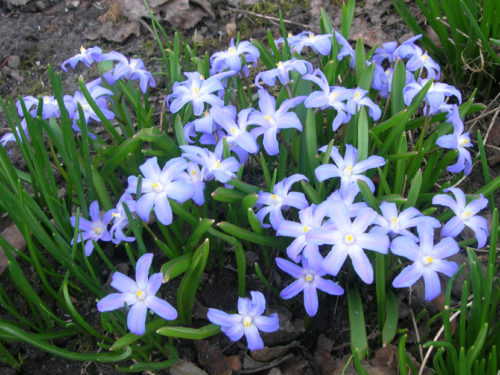
Differences can be seen only in the structure of the flower and the features of the layout of the stamens. In Hionodoxes, the flowers are reminded in the form of a star, their cups are always directed upwards, and in the prolee, the flowers are drooping, the shape of their whisk is similar to the bell. But the main difference in Hionodoxes from the Szill is lies in the features of the location of the stamens. In Hionodoxs, they firmly adjacent to the arc, forming a flattened base, and the prolesk - the stamens are free and non-grouped.
In addition, in contrast to the prolesta, Hionodox - exclusively spring genus of plants, the proleski also has oxnynets. In the natural habitat, the perianth of Hionodoxes is only blue color, and petals can be of different colors. The prolessia is characterized by uniformly painted petals of wild representatives of the genus.
Like elegant proleski, chioneoxes are spring ephemeroids, sourcing a thin and pleasant fragrance of the approaching spring.
Types and varieties of Hionodox
Different types of chioneoxes are easily cross each other, forming the most unexpected hybrid varieties and subspecies. Therefore, if you put on a plot of several varieties, many transitional and very interesting forms will soon appear. In addition, chioneopoxes are easily crossped with sibllas, forming as a result - chionoscilla.
Known the following types and grades Hionodoxes:
- hionodoxa Luciliae (Chionodoxa Luciliae)
An unusually beautiful plant, one of the most popular in culture. Hionodox flowers, up to 3 cm with a diameter of up to 3 cm, are placed on a single blooming, the height of which is up to 20 cm. They are collected in inflorescence consisting of three or two flowers. Flowers in April, the above-ground part dies in June. Blossom duration up to 30 days. Forms are common: alba (white) and rosea (pink). The breeders also removed the varieties with a blue and purple coloring perianth.
The most popular variety of this form, with larger bulbs and darkest coloring flowers, is known as Pink Gigant (Pink Jaya).
- hyonodoxa Gigantea (CHIONODOXA GIGANTEA)
Spectacular and beautiful view, due to large, up to 3.5-4 cm in diameter, bright blue flowers with light yawn. Flowers are collected in inflorescences of 1-5 pcs. On short, 8-10 cm long, blooms. Flowers long, 20-30 days. Blossom starts 5-6 days earlier than Hionodoxes of Lucilius. Grow garden shape with white flowers, which begins to bloom later on 5-7 days than blue.
Grade "CH. Gigantea f. Alba Hort »with pure-white flowers, blooms for 7-10 days later ch. Gigantea.
- hionodoxa Forbesii (Chionodoxa Forbesii)
Flowers two weeks later Hionodoxes of Lucilius, it has a higher bloomle (up to 25 cm), on which up to 15 blue or blue-violet flowers are located, with a diameter of about 3.5-4 cm. Flowers are collected in a high inflorescence, which takes half Total bloomry. A distinctive feature of the species is a white painting of the central region of the flower around the flattened stamens. The vegetation of the plant begins in March, and bloom throughout the spring, depending on the climate. A varieties with a pink and white colors are bred. The most famous variety "Pink Gigant", which has large pink flowers.
- hionodoxa Sardensis (CHIONODOXA SARDENSIS)
It blooms early: in early April, sometimes - at the end of March. Blossom continues for 12-24 days. The flowers are bright blue, almost without white spots, up to 2 cm in diameter, are collected in a thick brush of 8-10 pcs. Durable flowers, up to 12 cm high. It has varieties with white and pink flowers.
- hionodoxa dwarf (CHIONODOXA NANA)
Flowers are blue with a white central zone, a diameter of not more than 1 cm. Flowerines with a height of 10-15 cm with 1-3 flowers. Cultivated rarely.
- hionodox Violet Beauty
Differs in gentle lilac flowers in the form of bells of six petals, up to 4 cm in diameter. They are assembled in a loose-like inflorescence, with milk-white glare in the center and a yellow middle. Flowering falls for April-May. It is often used as a curb plant in Rabatkov, flower beds and alpine slides.
Greeting Hionodoxes
Due to the fact that the bulbs of the plants form a large number of children, and the fallen seeds germinate perfectly, Hioneodoxes quickly grow up and forms a beautiful dense flowering rug. These flowers are easy to purchase in specialized stores. And, even having only a few pieces of bulbs, in a couple of years you can grow a pretty good clubbel.
This is a perennial plant with 2 ways: vegetative (bulbs) and seed.
Reproduction by subsidiaries
Hionodox is capable of growing in one place, without a transplant, for many years. For vegetative reproduction, breeders use subsidiaries.
For the season, they usually develop from 2 to 4 bulbs-children who dig in July, and transplanted to a new place in August or September. Before landing, the bulbs are stored in a dry, cool and ventilated place.
The sealing depth of bulbs in the soil is 5-8 cm, and the distance between them is about 5 cm. The bulbs for the winter is better to cover with a film or a filling of sawdust. Hyonodox landed, in this form, withstand temperatures up to -20 ° C.
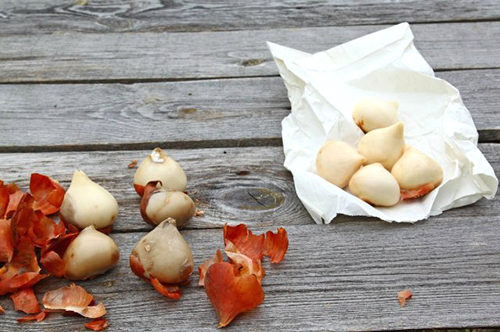
Hionodoxes are often formed, the so-called contractile roots are long rod roots, which, after flowering plants, become transparent, watery, and then die away. The bulbs resulting deeper into the ground, which is why they are not always just digging out, as they are small in size and are at different depths. Therefore, the procedure for reproduction with bulbs is better to spend once every 4-5 years, when a rather major nest of bulbs will be formed.
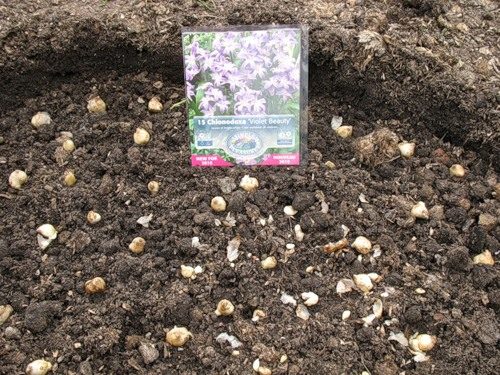
Considering the painstopping of gyonoodox reproduction by subsidiaries, often very small, bulbs, in some cases practiced vegetative reproduction with flowering adult garden crops.
For this, Hionodox docks and quickly transplants to another place. It is important to ensure that it is not to damage and not to dry small roots, so the transplant is carried out along with a volume wet wet land. If the plant needs to be searched during a vegetation, divide the bulbs need extremely carefully.
Reproduction of seeds
Seeds are sown, as a rule, in autumn, in wet and nutrient soil. It should be borne in mind that the Hionodoxes planted in this way will bloom only for the 3-4th year.
Perhaps reproduction and self-sowing, since the seeds of Hionodoxes love to enjoy the ants, which transfer them to long distances. But, in this case, the plant has been noticed over time, so flowerflowers prefer to control this process.
Hionodoxes can be used for tracks for holidays. In compositions with other bulbines (crocuses, hanalers, scillings) they look very attractive.
In the fall, healthy large bulbs are planted into the pots at a depth of 2-3 cm at 5-8 pieces and cheered in the shady seat garden. In November they are digging and left in the basement.
After 2 -2.5 months, the pots with bulbs exhibit a light window in a cool room. First develop leaves, and only under the influence of the spring sun, flower arrows will be shown.
After flowering, watering gradually stop and give foliage to dry. Until the next landing, the bulbs are stored in a dry and cool place.
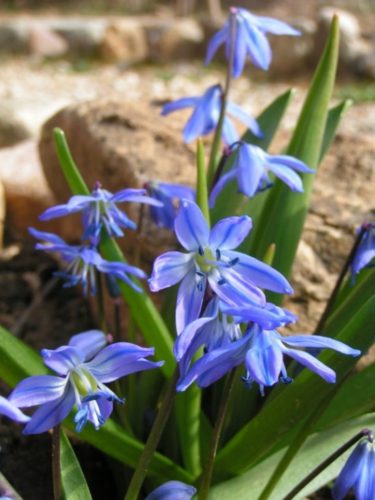
Hionodox, landing and care
Hionodox - winter hard-resistant, drought-resistant and unpretentious plant. Care of bulbous primrose does not require special knowledge, but some moments, though, should be considered.
Choosing a place
The perennial grows well as sunny areas and in half. If you put a Hionodox on an open and well-lit place where snow melts very early, it will bloom very early. But in half the evening, bloom will begin a little later, but will last for a few days longer.
Thus, choosing a place to land this primrose, you can stay on an open or slightly shaded area. It is also suitable place under the trees, which are late lit by foliage and, during the growing season or blooming, Hionodoxes, do not bother it in any way.
Concerning humidity, It is undesirable for most bulk stagnation, since favorable conditions for reproduction of rotten bacteria, fungi and mold are created. Therefore, on such (wet) plots, it is better to make an artificial embankment or an alpine slide, preventing, thus, excessive overvoltage.
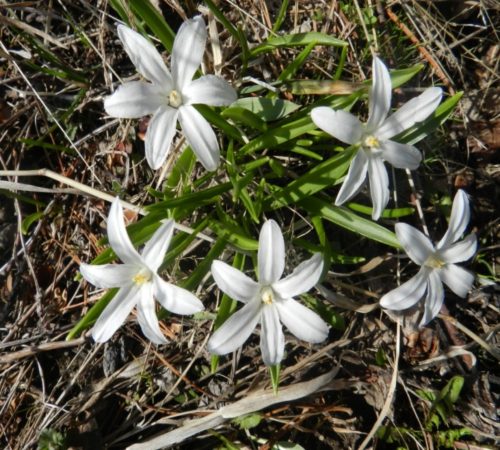
Selection of soil
Hionodox prefers fertile, well-drained soil. A perennial bulbous plant does not like acidic soils, clay, wetlands and meadow soils.
To provide a flower optimal conditions, it should be grown in crumbly and well-hazardous soils that have good drainage and gas exchange. Great fertile loams are excellent.
In the case of soil poverty, it is necessary to ensure the introduction of complex organic fertilizers. Perfect compost or humus. Before boarding, it is necessary to mix compost and large river sand, make this mixture in the wells for planting. Mulch the soil where hioneodoxes grow, is recommended by humus.
Features of care
Caring for this plant is easy. It lies in watering during flowering, weeding, soil looser and feeding.
Also, under field work on the site of early spring, the main thing is not to flood and not damage the rising shoots. After all, as all of the Rannical and Lukovichny, Hionodox has formed their floral shoots last year, who grown up for autumn and winter almost to the surface of the Earth. There are several warm days enough for the flowerons to be on the surface of the soil.
Podchar
During the appearance of the first sprouts, the need of plants increases in nutrients, so Hioneodox needs to be contacted.
Experts recommend using a nitrogen-containing fertilizer during this period. It is enough just to scatter it between shoots, avoiding the hits of the granules on the leaves, which can cause a burn.
Then you need to break the soil, providing primrose good air and moisture access.
Watering
Hionodox, like any other plant, needs watering, but does not tolerate water stagnation. From the oversupply of moisture, she starts rotting the bulbs, so it is necessary to actively water this flower only in a dry period.
Fighting diseases
In general, Hionodox is little susceptible to diseases. Only in case of incorrect plant care, there are such diseases such as the rot on bulbs or Ahelenhoidez. At the same time, scales of bulbs change their color to the brown and, in the end, they rot. Sick garden culture is poorly developed and almost does not bloom, it looks very painful and extremely not aesthetic. Damaged bulbs should be destroyed, and healthy - disinfect hot water (about 43 ºС).
Transfer
Despite the fact that Hionodox grows perfectly and blooms abundantly in one place for many years, experienced gardeners are recommended to transplant it every 5-6 years. Hyonodoxes dugged in a dry and cool place dugged in a dry and cool place before landing.
Hionodox plant - frost-resistant, so it is not required to cover it for the winter.
Hionodox in landscape design
Due to its high decorative qualities, unpretentiousness and duration of flowering, Hionodoxas are successfully used in various landscape compositions.
Alpine hill or rocarium is a great place for Hionodoxes. There are not so many blooming plants in early spring, so the primrose demonstrates itself in all its glory. In just a few years, this is a small miracle can create a magnificent colorful picture.
On the lawn under the trees of Hionodox looks quite natural. It does not require shelter for the winter and over time, if it is not disturbed, stirrer grows, forming a bright pictorial stain.
It is often used to framing the flower, along with other blooming grassy perennials requiring similar conditions. Here, a suitable Hionodox company will make an elegant liver, a variety of types of primrose and frost.
Hionodox and container feels perfectly, especially in combination with narcissions, crocuses and hyacinths.
The lowered plants look great as a framing for high colors, as well as on the lawn, without disturbing its holistic picture of an extensive herbaceous carpet. It is possible to plant hioneodoxs along the tracks and any borders.
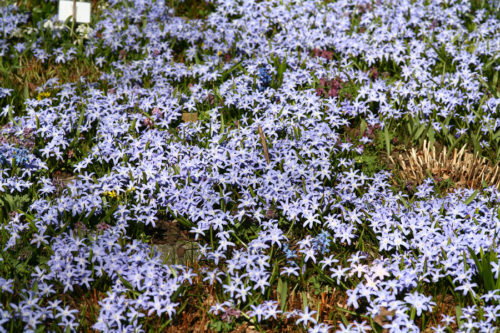
Along with other, early blooming plants, Hionodoxs are used to create spring flowering lawns. Hionodox is well combined with all ephemeroids, such as crocuses, daffodils, proleski (Scylla), dwarf irises, haggard, goose onions. It is especially good in the gardens of a natural, wild-growing look.
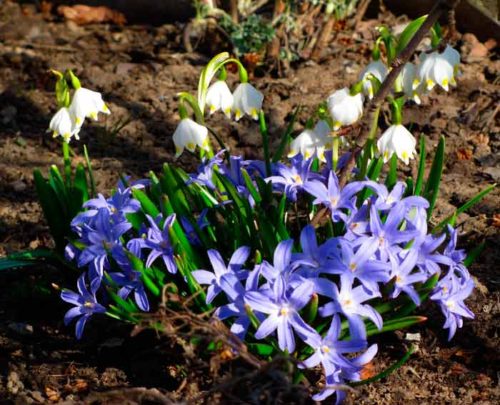
Hionodox, photo
Video "Hionodox, landing and care"
So, Hionodox, at first glance, a gentle and fragile plant is not a whimsical and endless bulbous perennial. Flourishing one of the first, this is an exceptionally cold-resistant plant capable of carrying even strong spring frosts without damage. Hionodox is charming primrose, despite its very modest sizes. After all, it is worth seeing on the bright spring sun, a couple of dark green root leaves, as immediately between them there is a bundle of magnificent and bright spring flowers.
Gardeners, not the first year, gladly breed pink, white, purple and lilac flowers so that they decorate the garden plot, when the grass has not yet been conceded. After all, it is spring that so you want bright colors and gentle smells of early plants!
And, taking into account the fact that the perennial is unpretentious when landing and leaving, any novice flower descender can easily grow it on its site.

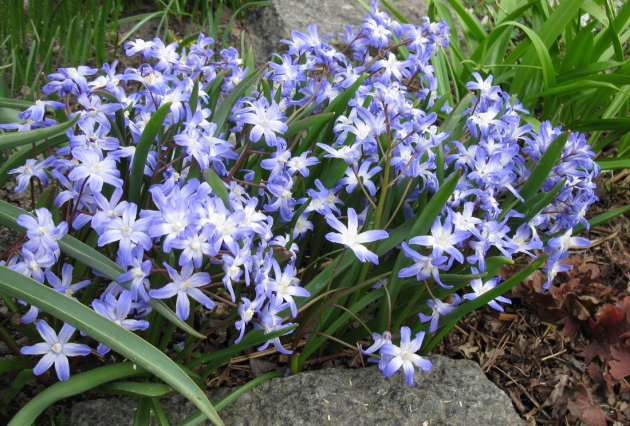
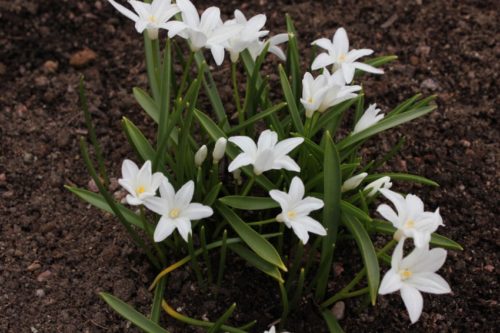
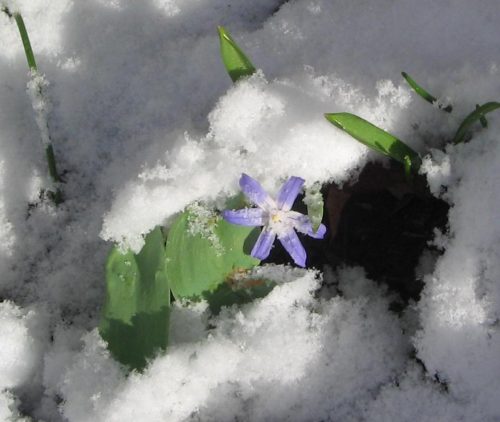
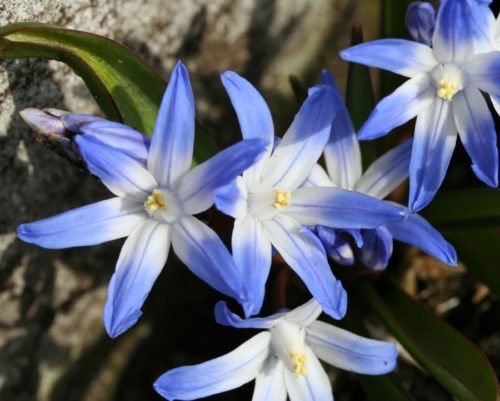
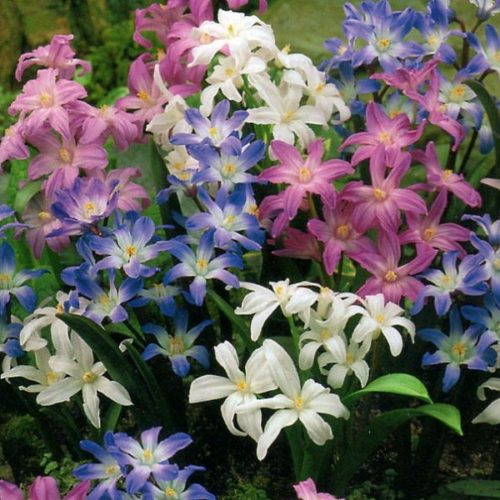
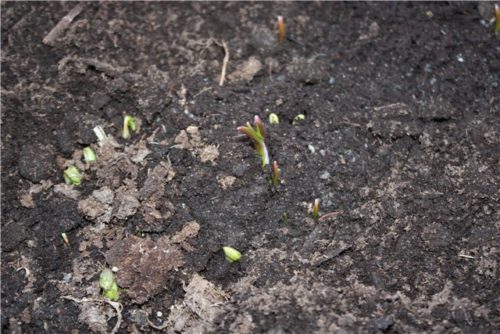
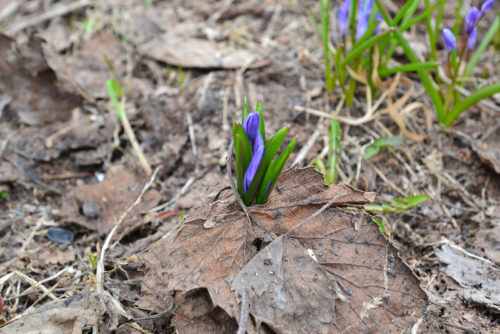
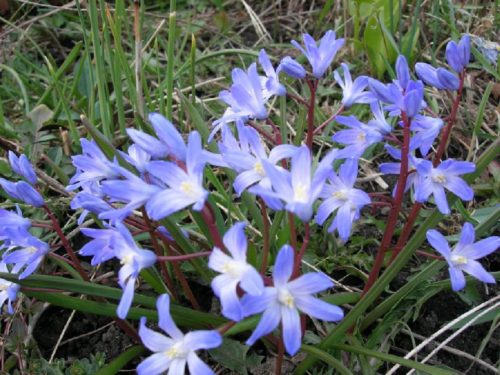
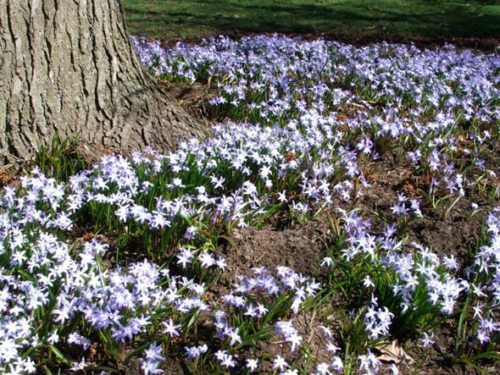



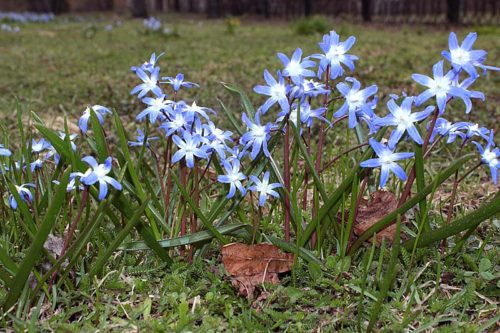
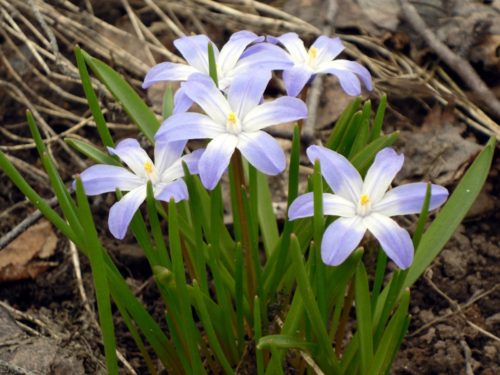

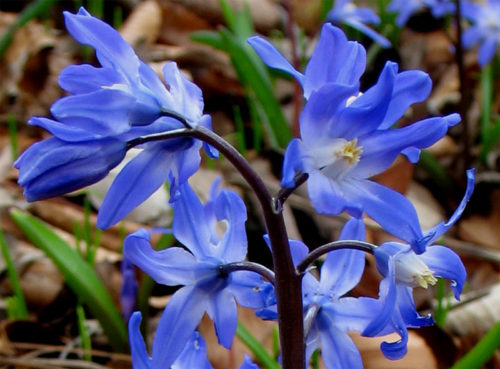
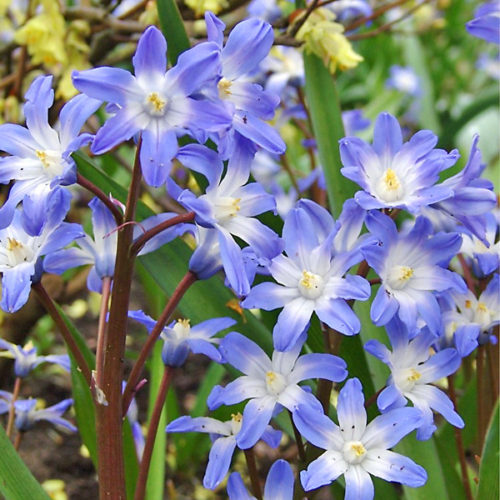
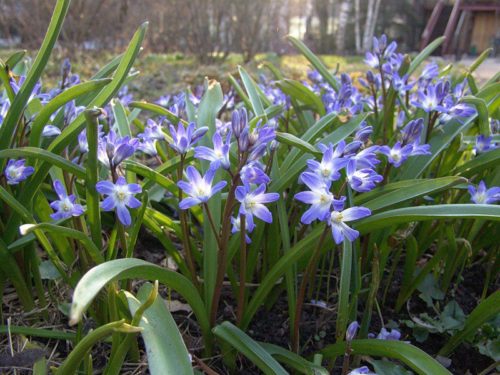












 Start a discussion ...
Start a discussion ...